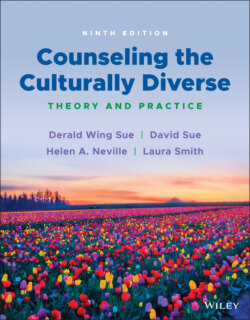Читать книгу Counseling the Culturally Diverse - Laura Smith L. - Страница 91
CLASS‐BOUND VALUES AND PERSPECTIVES
ОглавлениеDiverse cultural perspectives and values can be reflected by diverse social class experiences as well as by racial‐ethnic diversity. Social class and classism have been identified as two of the most overlooked topics in psychology and mental health practice (APA Task Force on Socioeconomic Status, 2007). Statistics suggest that the income inequality gap—the gap between the poorest and the wealthiest Americans—is increasing, and the continuing escalation of wealth inequity in the United States is dramatic. The wealth gap between rich and poor families has grown steadily wider as more and more wealth trickles up to the top (and away from middle‐ and lower‐income families). The top 1% of wealthy Americans owned 200 times the wealth of the average American in 2020; in 1980, they had owned only 60 times as much (Smith & Reeves, 2020). In contrast, the net worth of middle‐income families actually decreased by 20% during that time, while lower‐income families sank even further, experiencing a loss of 45% (Horowitz et al., 2020).
In the United States, 11.8% of citizens overall live in poverty (Tanzi & Saraiva, 2021). Segmented by race, the poverty rate for White Americans in 2019 was 9.0%, while for African Americans, it was over twice that at 21.2%. For Latinx people, the poverty rate was 17.2%, and for Asians and Pacific Islanders it was 9.7% (Semega et al., 2017). The highest U.S. poverty rates are found among American Indians at 24.2% (Kaiser Family Foundation, n.d.). These statistics underscore the intertwined nature of race with social class in the United States as the result of historic events such as the transatlantic slave trade, the seizing of lands from native people, and institutional barriers to wealth creation (Lui, Robles, Leondar‐Wright, Brewer, & Adamson, 2006).
